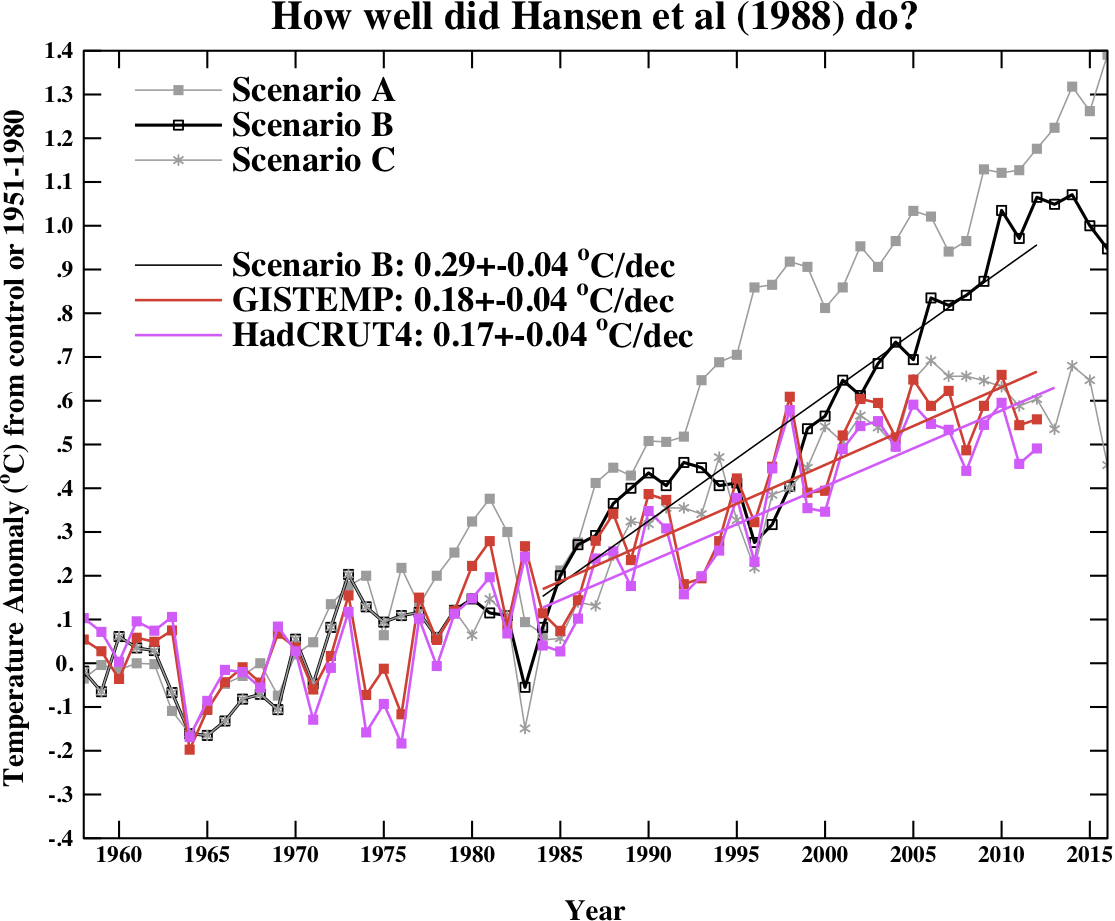Originally posted by BlasterBates
View Post

That is, reality tracked somewhere below Scenario B. Its true that the 1988 model is now obsolete and more recent models, if you used them to hindcast, would get a much closer projection. Still, we're a long way from 'nothing to worry about'.













Leave a comment: